The 2012 Willow Creek Global Leadership Summit: Lead where you are
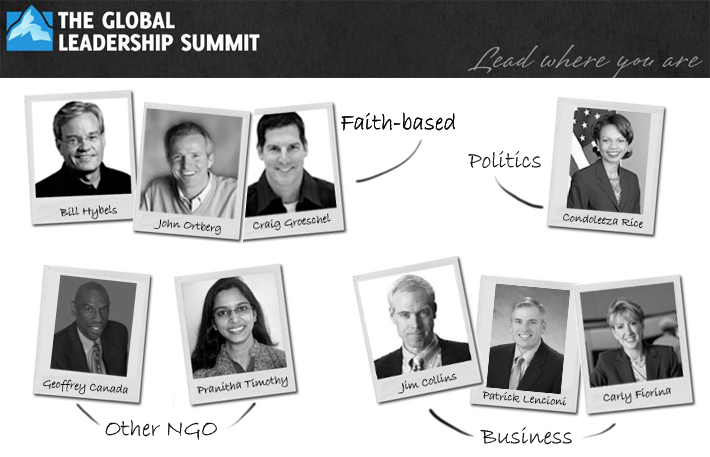
Lead where you are
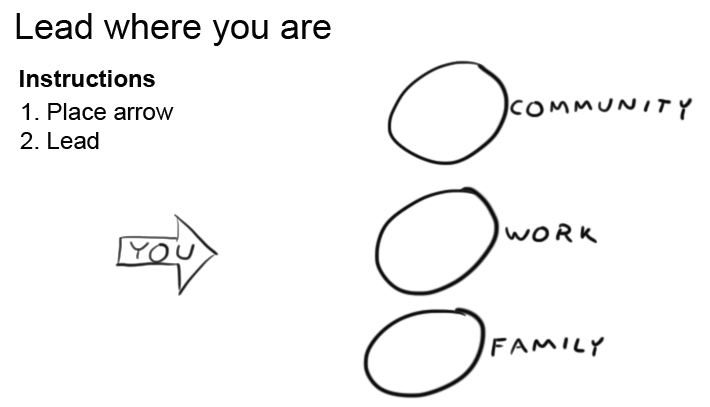
What you get out of the Global Leadership Summit depends on where you are at in life when you attend. This year I attend from the perspective of a manager to over 50 staff, tasked with leading profitability so as to reward a high-capacity team in a softening market. I also attend as a board member of a non-profit, developing strategy for a program with over 15 years of history emerging out of a parent organisation into its own entity. Finally, I come as someone who is reconciling a desire to make a lasting difference in the short time remaining on this earth with the day-to-day routine of satisfying a profit motive.
It is to this last point that this year’s tag-line resonates: Lead where you are. The GLS will not tell me how to develop a capacity planning model or plan a launch event. What it will do is help determine the kind of person I am as I do those things.
The format of DVD sessions on the big screen means the experience could perhaps be replicated by queuing up a series of Ted talks in my living room over a couple of days. The value in attending the GLS is in taking you out of the day-to-day to reflect on your leadership approach in a structured context of making a difference. This context is then applied to the situation of each attendee, translating speakers from faith-based, business, community, and political circles into the sphere of influence of each delegate.
Reflecting on six years of GLS
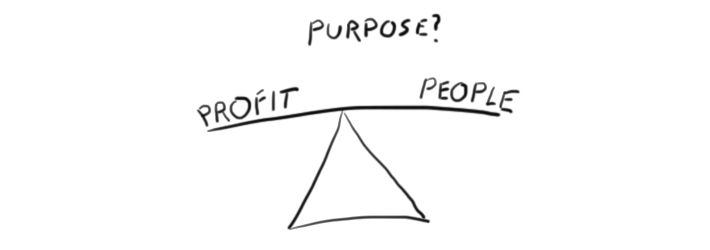
I was asked this year what I got out of attending the summits. Given that this is my sixth year, it is a valid question. I can see aspects of past summits written into the DNA of my leadership style.
My belief in each individual realising their strengths was supported by Marcus Buckingham’s talk in 2007. My desire to listen to “the fringe” within the organisation and understand and guide the narrative aligns with 2009’s presentations by Gary Hamel and Dave Gibbons.
The 2010 summit reinforced many leadership tools I use on a regular basis. These include:
- Bill Hybels model of vision casting “from here to there” and the value of high performers;
- Jim Collins’ warning of hubris as the first stage of decline;
- Andy Stanley’s depiction of natural tensions in organisations;
- Dan Pink’s model of motivation around autonomy, mastery and purpose; and
- Jack Welch’s depiction of clearly defining and communicating performers in your organisation.
My reflection on the 2011 summit is a reflection on a year of growth. My main take-aways at the time were vulnerability and humility, two traits that seem out of place against the backdrop of commercial pressures. Over the past twelve months, my perspectives on firms of endearment, purpose, meaning, and progress need to be considered against commercial realities. The resulting tension results in a need for accountability and gratitude to moderate the approach to achieve an end goal of helping people realise their potential within the organisational context.
I enter into the 2012 summit with a framework of balance. Profit margins are the ticket to the table to have the people conversation. I now look to this year’s summit speakers to see how their perspectives can help frame the opportunity moving forward.
Inspiration
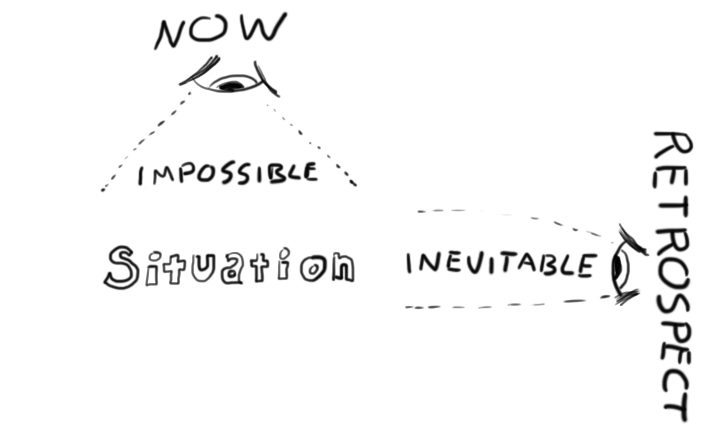
Inspiration came from for U.S. Secretary of State Condoleezza Rice who shared that the most important quality of a leader is optimism. Others will not follow if they do not see the possibility of a brighter future. Leaders do not accept the world as it is, but as it should be. Times that currently seem impossible when viewed in retrospect will be inevitable. Today’s headlines and history’s judgement are rarely the same.
Education reform activist Geoffrey Canada of the Harlem Children’s Zone spoke on the reality of failure early in entrepreneurial endeavors and remembering who you are working for. You work for your client, not your staff. As a case in point, Geoffrey said he made a mistake of allowing the wrong staff to stay on for a year when the kids he supports not did not have that year to give.
Geoffrey also raised an interesting notion of the “tipping point” in his neighborhoods. For all points of contact, at what point will kids have a 60 per cent to 70 per cent chance of receiving a positive message as compared to a negative message? This is an interesting concept to apply to both values and strategy in organisations. I ask, what is the likelihood that my staff will encounter the positive values we are trying to cultivate, and what is the likelihood of encountering a strategic change initiative we are implementing on the floor?
Finally, Pranitha Timothy, Director of Aftercare at International Justice Mission, inspired through her story of surviving a brain tumor to go on to restore more than 4,000 people from slavery. Stories from leaders such as Pranitha’s and ex-Hewlett Packard CEO Carly Fiorina who shared about her battle with cancer and the loss of her step-daughter help apply Condoleezza Rice’s recommendation to maintain perspective. It is important to remember that there are other situations much more difficult than yours and that leading is an honour rather than a chore.
Strategy: six by sixes, 20-mile marches, and six clarity questions
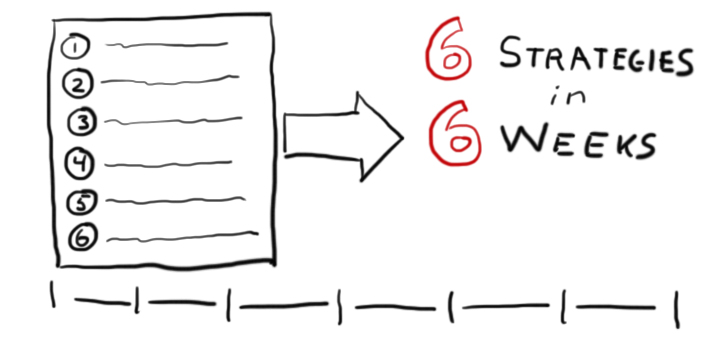
Another area that was a highlight was a consistent message around strategy, a topic that is top of mind for me lately. Bill Hybels spoke about results being a numbers game to some extent, where you have to sow seeds in order to produce fruit. If you want more results, sow more seed.
He followed with his strategy around applying six strategies over six weeks. The strategies are on top of the day to day efforts and have proven to mobilise his teams around a cadence of achievable “six by sixes” opportunities. How to balance the two messages of “sowing more seeds” with reducing the number of strategic initiatives may take me the next twelve months to reconcile.
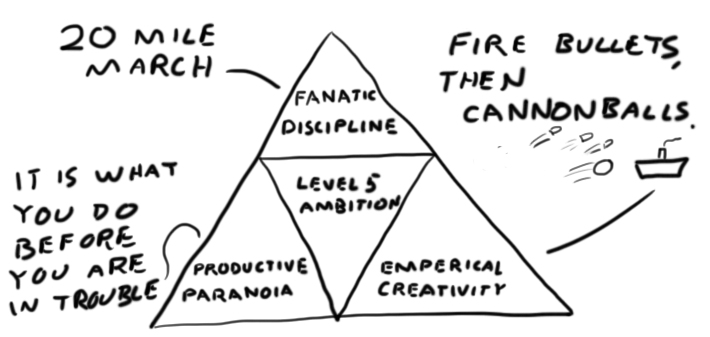
Jim Collins reiterated this paradox with lessons from his latest book Great by Choice. Collins described attributes of companies who achieved ten times market value of their competitors. Three main behaviours include:
- Fanatic discipline
Speaks to a discipline to not go too far so as to stretch yourself thin to where you are then unprepared when unexpected things hit you. Establish a standard of performance and hold to the philosophy even in the toughest conditions. Success is based not on an average but on consistent performance. The signature of mediocrity is not in an unwillingness to change but in chronic inconsistency. - Empirical creativity
Creativity needs to be supported by empirical evidence. An analogy used was that of firing bullets to find the angle to the target so you make the most use of your gunpowder when firing the cannonball. Bet on something you know is going to work. Blend creativity and discipline. Creativity is natural, discipline is not. Discipline amplifies creativity rather than destroy it. - Productive paranoia
The only mistakes you can learn from are the ones you survive. You have to be optimistic, but there is awareness that the world is a scary place. Successful companies maintain a ratio of 3 to 10 times cash to assets, a practice started when they were small. The dedication of a financial buffer is not a luxury of size. It is what you do before you are in trouble, how you manage with discipline in good times so you can be strong when people need you the most.
Finally, Patrick Lencioni spoke from his new book The Advantage about creating healthy organisations through four disciplines of building a cohesive leadership team, creating clarity, over-communicating clarity, and reinforcing clarity. Lencioni focused on six critical questions to create clarity:
- Why do we exist?
- How do we behave?
- What do we actually do?
- How will we succeed?
- What is most important, right now?
- Who must do what?
Lencioni stressed that getting to what we actually do comes down to a core three things that are non-negotiable. This is understood by all staff such that if a customer asks for something that violates these principles, you can respond with a simple message of “We’ll miss you.”
As a personal application of this principle, I am reminded of situations in the last twelve months. In one situation, a client did not want to continue to invest in their six year old system that was no longer supported by underlying technologies. In another situation, a client did not see the value in investing in quality control for each release. I have found that these situations expose values of my studio even when though those values may not be explicitly stated. The opportunity then is to clearly communicate those values, such as “We revolutionise through digital” and “We deliver solutions that work” to manage expectations in the event those values are asked to be violated.
The path from here and reconciling the three 15s
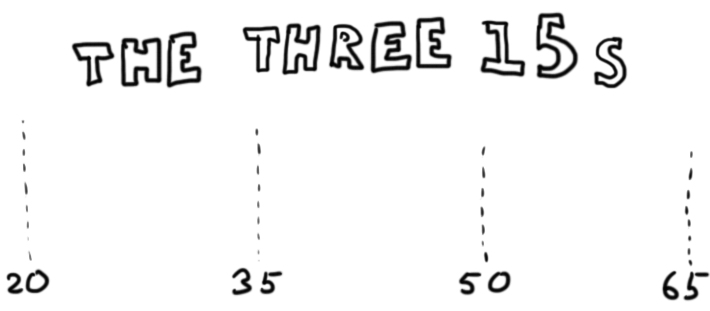
A final point that hit me this year was the concept of the three 15s, where Hybels presented our careers in three bands of fifteen years. In the first band, we are invincible, operating on pure adrenaline. In our second fifteen, we begin to realise we may have a finite number of opportunities remaining as some of our mistakes may come to rest. Our final fifteen is a period when the end is in sight and our desire is to finish as strongly as possible.
I can relate to this metaphor as I enter the middle of my middle fifteen. The invincibility of youth is gone. Having just completed my Masters of Applied Social Science (Management), I feel I have more to learn than ever. In talking to a colleague about this, he observed that expectations on you during your first fifteen tend to be low, whereas in your middle fifteen you are expected to have the answers.
Therein perhaps is the answer as to why I attend the Global Leadership Summit each year. I expect of myself that I should have the answers by now. I am coming to grips with just how much we are all making it up as we go in this complex and changing world. I can never learn enough to have all the answers, but I can perhaps become more of the kind of person who can arrive at the right answer at the right time.
Yet that is what makes it so rich and exciting. It is a fantastic world full of potential. At the core of this potential I still believe is the ability for each individual to fully understand what they can achieve in the brief time they have.
To this end, I will leave you with a quote from Jim Collins as he reflected on his observations on finding meaning behind what we do on a day-to-day basis:
“It is impossible to have a great life unless it is a meaningful life. It is difficult to have a meaningful life without meaningful work.”

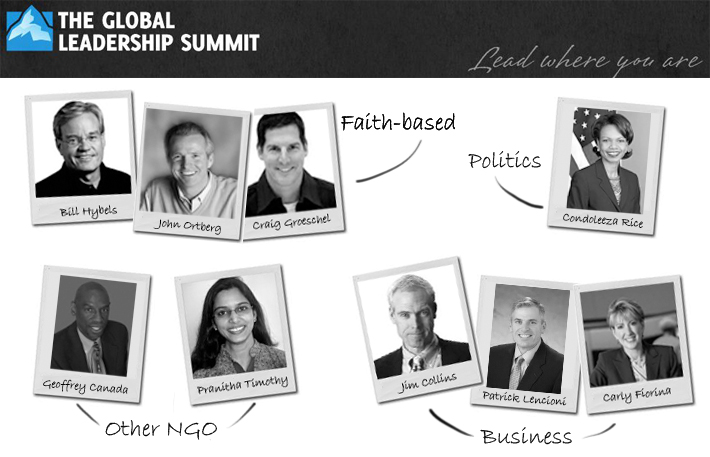
I will add though that you often work from a base of instinctively ‘knowing,’ or inherently understanding, many of the topics discussed, yet because the speakers shares from a position of authority, you think that you’re just learning it now, when you’ve been living the principles, often, for years.
Thanks Theresa! Too true, how a well presented topic can make what you already knew seem new. And also to result in those who speak into your life to say “but that’s what I’ve been saying for years!” 🙂
Chad, this is a very succinct and helpful summary of these teachings. I am going to copy and keep them. You are dedicated and as Theresa says, have a great deal of “instinctive” knowing. I pray that you are not just successful in your work but that you are overlaid with peace and comfort.
Thanks Mary, glad it helped! More peace and comfort is always welcome, appreciate your thoughts as always. 🙂